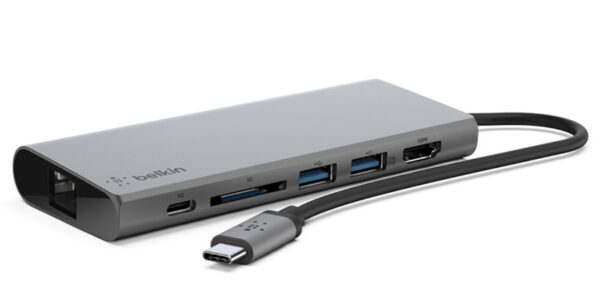The USB-IF says goodbye to confusing SuperSpeed USB branding
When SuperSpeed USB turned into announced in 2007, the branding changed into a logical differentiator. The term launched with USB 3. Zero, which added max statistics switch fees from USB 2.Zero’s measly 0.48Gbps all the manner to 5Gbps. But by means of 2022, there have been 3 variations of SuperSpeed USB in numerous connector types going through customers, plus the potentially quicker USB4. Looking beforehand, USB merchandise will preserve to provide special performance skills at the same time as looking the same, however, there may be at least one factor we will all agree on: The word SuperSpeed is not a useful differentiator anymore.
SuperSpeed branding already felt pretty unremarkable via 2019, whilst the USB-IF, which makes USB standards, was renamed USB 3. Zero to USB 3.1 Gen 1; USB 3.1 to USB 3.1 Gen 2, and then USB 3.2 Gen 2; and USB 3.2 to USB 3.2 Gen 2×2. The institution sought to make matters less difficult for customers by recommending to carriers that they label products now not with the aid of specification call but by means of SuperSpeed USB followed by way of max velocity USB three.2 Gen 2×2, as an example, might be SuperSpeed USB 20Gbps.
Per updated tips and logos that started coming out in this region and that you may see earlier than 2022 ends, as said through The Verge nowadays, the USB-IF now recommends carriers label products as, virtually, USB 20Gbps (for USB three.2 Gen 2×2), USB 10Gbps (for USB 3.2 Gen 2), etc. No SuperSpeed is important.
USB4, in the meantime, gets equal treatment, with the USB-IF recommending USB 40Gbps and USB 20Gbps branding for the spec. When it comes out, USB4 Version 2. Zero should be called USB 80Gbps.
USB4 Version 1. Zero, USB Version 2.Zero, USB three.2, SuperSpeed Plus, Enhanced SuperSpeed, and SuperSpeed+ are defined in the USB specifications; but, those terms aren’t supposed to be used in product names, messaging, packaging, or any other patron-facing content material, the USB-IF’s language usage recommendations up to date in September.
The USB-IF still recommends providers label USB 2.0, which could take the form of USB-C, USB-A, USB-B, and more, as Hi-Speed USB without a performance indicator. Most products the usage of USB 2. Zero specs are peripherals, like keyboards and printers, Jeff Ravencraft, USB-IF president, and COO, informed Ars Technica, so the enterprise organization does not suppose consumers will mistake the tech for being quicker than, say, USB 5Gbps. The USB-IF additionally feared people complicated USB 480Mbps as being faster than USB 5Gbps, due to the bigger range we wager USB zero.48Gbps does not appear so pretty.
Hi-Speed USB has been around for over 20 years and is properly hooked up in the market, so we targeted our rebranding efforts to 5Gbps and up, the USB-IF spokesperson stated.
Recommended USB 1.0 branding, in the meantime, is untouched.
For USB-C cables, the USB-IF now recommends packaging and emblems display both max statistics switch rate and strength shipping.
This doesn’t exchange lots
The changed hints align with what many vendors had already been doing: listing speeds on my own with no spec call or the term SuperSpeed. Some carriers list USB spec names best. With all this in mind, it is no longer sudden to look at the legit death of SuperSpeed branding, specifically with the USB-IF revealing its elective, SuperSpeed-loose USB-C trademarks a yr in the past.
The primary issue on the coronary heart of USB confusion remains. Even as USB-C will become greater ubiquitous and, in a few places, subsequently required by using regulation, USB-C products could have various skills, together with data transfer prices of zero.48–40Gbps.
The USB-IF’s suggestions also do not specify other abilities, like Intel Thunderbolt assist, whether or not a cable’s energetic or passive, and PCIe tunneling.
But according to Ravencraft, the everyday character would not truly care approximately any of these things. The exec advised The Verge that clients take a look at businesses and confirmed that maximum clients best care approximately the highest records overall performance level the product can reap and the very best strength level I can get or drive from this product.
Most people do not recognize USB branding, messaging, revision management, or spec names, he instructed The Verge.
Everything’s optional
Despite its efforts to simplify what clients see, the USB-IF also can not ensure enormous utilization of its non-compulsory logos and certification. The USB-IF-certified merchandise list contains 2,500 objects while there are endless devices, cables, and products using USB.
Ravencraft admitted to Ars that some agencies might also view the charges related to getting USB-IF-licensed, which includes passing USB-IF compliance testing and obtaining a USB-IF trademark license settlement, as prohibitive. There are discounts for USB-IF members.
Ravencraft also cautioned that a few organizations may also forego certification in the event that they recognize they reduce corners to store expenses and, accordingly, would not skip compliance trying out.
So, the Wild West of USB labeling will possibly hold to a few diplomas, however, customers have alternatives, too. Products with USB-IF trademarks, if available, right now tell you how a good deal of power delivery and speed to assume. Whether or now not that rate should be taken into consideration a great pace is up to you.


 For all latest news, follow The carefulu Google News channel.
For all latest news, follow The carefulu Google News channel.




